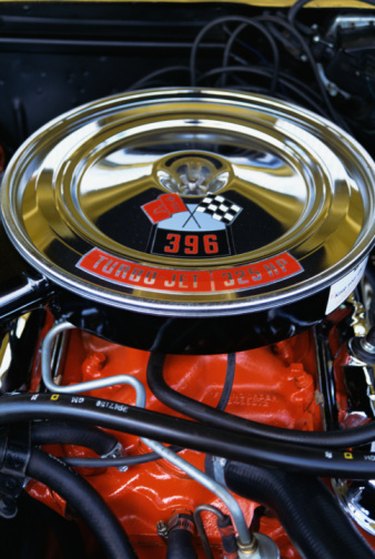
There are several steps in the firing of a cylinder in an internal combustion engine. With a piston starting at the top, the crankshaft pulls the piston down, opening the chamber for a mixture of fuel and air to be injected. The piston is then pushed back up the cylinder, compressing the fuel/air mixture into a very tight space. A spark plug ignites the compressed fuel/air mixture, driving the piston down and turning the crankshaft. In multi-cylinder engines this process repeats itself multiple times, delivering power to the crankshaft.
Troubleshooting Firing Order
A critical component of a functioning engine is the firing order of the cylinders. When the firing order is wrong or delayed, the engine does not run properly. The spark may be delivered to the cylinder when there is no fuel/air mixture or before it is properly compressed. One symptom of an incorrect firing order is the engine does not run. Turning the ignition does not start the engine.
Causes of Wrong Firing Orders
Every engine manufacturer provides a service manual detailing the correct firing order of their cylinders. Firing order begins with a spark plug wire leading from the number one cylinder to the number one position on the the distributor and the remaining spark plug cables connected to their respective cylinders. When one or more spark plug wires are crossed, the engine may not run, or runs roughly as the timing of fuel/air compression does not align with the delivery of the spark.
Correcting Firing Order
Locate the number one terminal on the distributor and ensure that its spark plug wire runs to the number one cylinder. Ensure that the number two spark plug wire goes to the number two cylinder and so on. The vehicle's service manual will indicate where the number one terminal on the distributor is and which cylinder is number one. Check for shorts, cracks and frays in the wires themselves to ensure that a short is not causing the wrong firing order.
Timing problems
While engine timing problems are not directly related to incorrect firing order, they cause similar symptoms. Failure to start, rough idling and backfires can all result from incorrect timing, assuming that the firing order is correct. A timing light aimed at the engine timing scale on the front of the engine helps determine if overly advanced or retarded timing is preventing the engine from firing at the correct time.